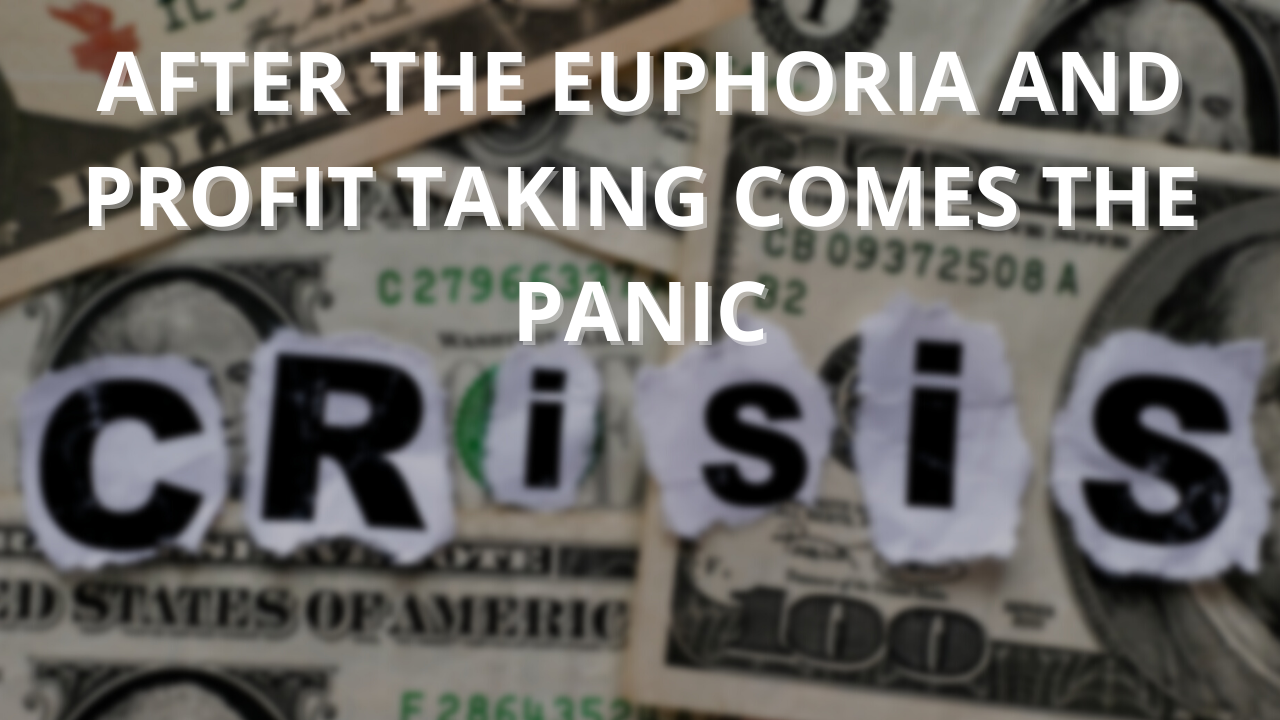
This week everyone has been reminded why they choose to invest in gold and buy silver. As markets reacted to Silicon Valley Bank’s demise, the near-collapse of Credit Suisse and the ensuing panic of policymakers, investors and depositors, gold, and silver have come to the fore. Why did they climb in the price? Because this story isn’t new.
The actors might change, the timings might change but ultimately the results are the same – banks collapse, central banks react, governments panic and people lose money. And in the background there sits gold and silver. Out of reach of printing presses, monetary policy and bailouts. Entirely sovereign and there to protect portfolios as the cracks in the financial system get bigger.
First, the government lets money get too easy. Second, that money floods into assets i.e. stocks, bonds, real estate, commodities, crypto, private equity, wherever the return is excitement and highest price action, while ‘times are good’.
Money sitting in a bank account is widely regarded as foolish since the bank pays deposit interest at rates far below the rate of inflation [by both official and unofficial calculations] and the euphoria and mentality of ‘always going up’ sets in.
Furthermore, free-flowing money is available at low interest rates to borrow, which encourages households, businesses, and even governments to borrow – to buy more assets and get ahead of inflation! The commercial bankers are happy to lend since their vaults are stuffed with cash that needs to earn a small return.
Entrepreneurs and investors notice colleagues who are more levered, or levered up years before they did; yet have made so much more paper wealth those who tried to be prudent.
The impact of SVB collapse on the economy
During these years governments are asleep at the switch. Politicians often use the tax system to create or destroy incentives. During the easy money years, incentives are all wrong. Interest income on money at the bank is taxed each year that it is earned. So, money in the bank must fight off both inflation and income taxation, leaving almost nothing left for return.
Meanwhile, investors that borrow money from the banks to buy assets pay little to no taxes because there is no ‘dividend or interest income’ generated by brand new startup companies or from owning piles of copper commodities.
The crazy perverse incentive during this part of the economic cycle when money is freely flowing into assets is – governments start to favour financial shenanigans through the tax code because it allows actors to avoid taxation by never selling [instead they borrow against their unrealized winnings to reinvest even more into the same inflation avoidance scheme].
Eventually, some unexpected day arrives when governments and central banks ‘pivot’ to tighten policy. In 2022 the ‘pivot’ came from the obvious realization inflation was too high, had been for too long, and was not caused by any acceptable enemy [they tried to blame it on temporary measures and then on Putin but in reality, it was the central banks that printed the trillions of Euros or Pounds or Dollars and it was the governments that handed the money out].
Central banks then panicked and the fear of being impotent set in. In the very long run, they are impotent to affect change and are fighting the tides while overreacting to events, but people working in central banks know this only on a subconscious level.
Nonetheless, after a decade of cheap easy flowing money, followed by a full-on waterfall of cheap money (March 2020-June 2022) central banks then set in motion the quickest tightening cycle in the last 40 years.
Now 9 months into the tightening cycle the cracks and vulnerabilities in the system are widening.
Commercial banks have the first giant problem. This week Silicon Valley Bank was the problem poster child, but more will come. Depositors at the bank begin to realize they can earn interest income at 5% without taking any business risk. And they know that business risks are higher than anytime in decades because all the cheap money driven schemes have fallen in value. Bitcoin is way down. Stocks are down. Bonds are way down, even ones issued by the governments. Real Estate is down and/or frozen.
Companies are using their cash as profits sag and layoffs are in the works – the ‘canary in the coal mine’ is the tech companies but others are following with spending cash and layoffs.
History tells us, as laid out by Hyman Minsky, that after the euphoria and profit taking comes the panic. Commodities and stocks and bonds and real estate will be sold off during a panic as ownership of these assets will transfer at lower than imaginable prices from the people who borrowed too much, into the hands of people who borrowed little to nothing at all.
After all these transfers are done, the commercial banks will be chastised by the politicians for recklessness. At which point lending by banks slows and stops. The economy slows, businesses lay off more workers and recession sets in.
The debacle causes panic everywhere in the market
Central banks and governments step in to reassure markets, while still chastising commercial banks, pension funds, etc. They generally offer up guarantees and/or loans. And in the current situation reassess the need for further interest rate hikes, even though inflation is not down to their 2% goal.
This is in line with our view that central banks will raise their inflation targets as they are not able to slow the economy enough, without causing another financial crisis and severe recession; see our post “Fed will collapse the economy and be forced to pivot” from November 4, 2022.
There is only one asset class which is outside this Wagnerian cycle of destruction. Physical silver and gold! Since the physical metals are held individually instead of collectively like stocks and bonds [for example, did you know that Robinhood actually ‘owns’ your Tesla shares?], or even ETFs, they remain outside the leverage system. And as we said in our post on March 13 – Gold and silver are the only ones who know what they’re doing!
The Fed has much more to consider than just inflation at its upcoming meeting on March 21-22. The markets are betting that they either hold interest rates or only raise by 25 basis points. Which is significantly down from the 50-basis point rate rises expected by economists just last week.
But, given the unbelievable decision by the ECB to double down and go for yet another hike, who knows how audacious the Fed will be feeling. The committee is also scheduled to release their summary of economic projections update, which we think will show a less ‘hawkish’ Fed than the December report.
The tide is turning towards mitigating the damage of the steep rise in interest rates, but will it turn fast enough and when it does, just how close to capsizing will we be?
This is positive for gold and silver prices!
Buy Gold Coins

GOLD PRICES (USD, GBP & EUR – AM/ PM LBMA Fix)
15-03-2023 1906.00 1923.40 1574.74 1593.73 1787.45 1823.38
14-03-2023 1901.45 1907.55 1563.75 1568.77 1774.81 1779.55
13-03-2023 1882.10 1911.30 1561.39 1572.62 1764.47 1782.86
10-03-2023 1834.95 1861.25 1530.35 1539.44 1731.09 1743.62
09-03-2023 1817.50 1831.40 1530.52 1536.73 1721.35 1731.77
08-03-2023 1813.35 1816.30 1531.74 1537.86 1719.60 1724.03
07-03-2023 1843.05 1826.55 1535.63 1529.19 1729.33 1719.88
06-03-2023 1851.70 1849.05 1539.87 1538.78 1740.78 1733.67
03-03-2023 1845.55 1841.15 1538.45 1537.36 1738.69 1737.31
02-03-2023 1831.75 1836.20 1529.33 1537.08 1723.86 1731.54
Buy gold coins and bars and store them in the safest vaults in Switzerland, London or Singapore with GoldCore.
Learn why Switzerland remains a safe-haven jurisdiction for owning precious metals. Access Our Most Popular Guide, the Essential Guide to Storing Gold in Switzerland here


